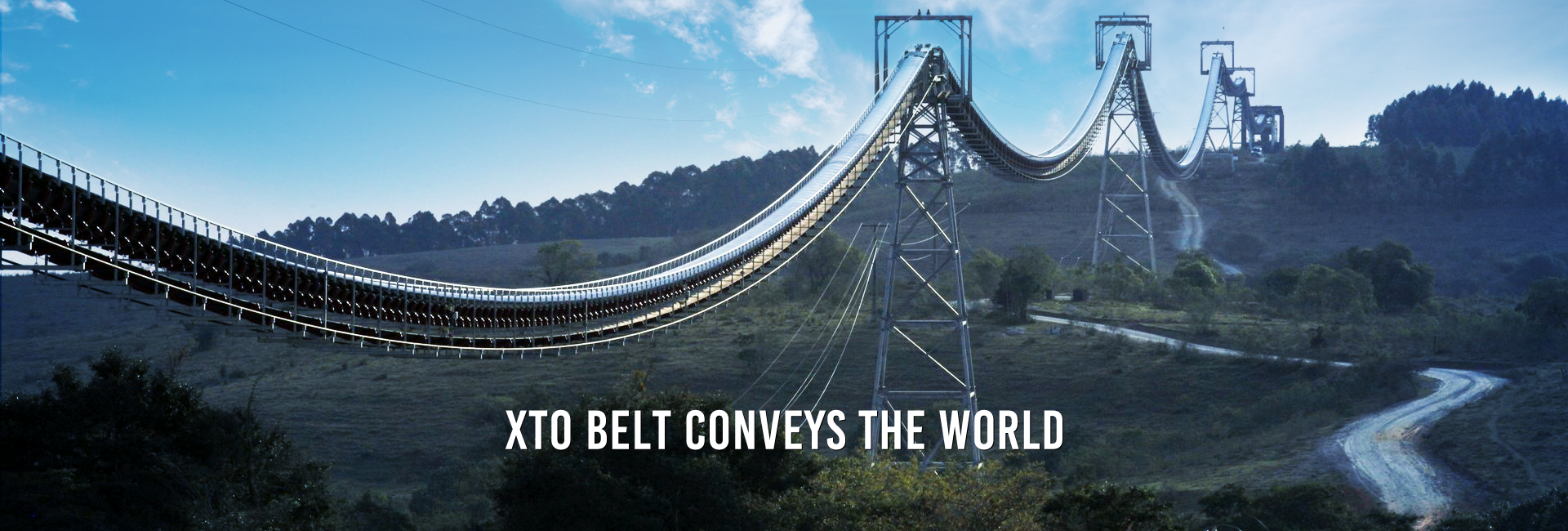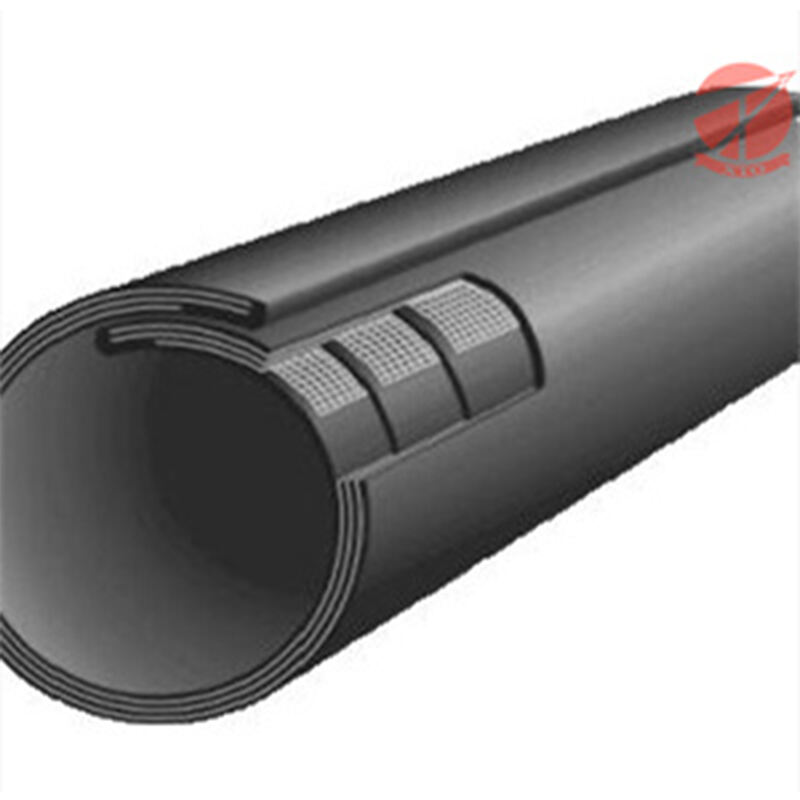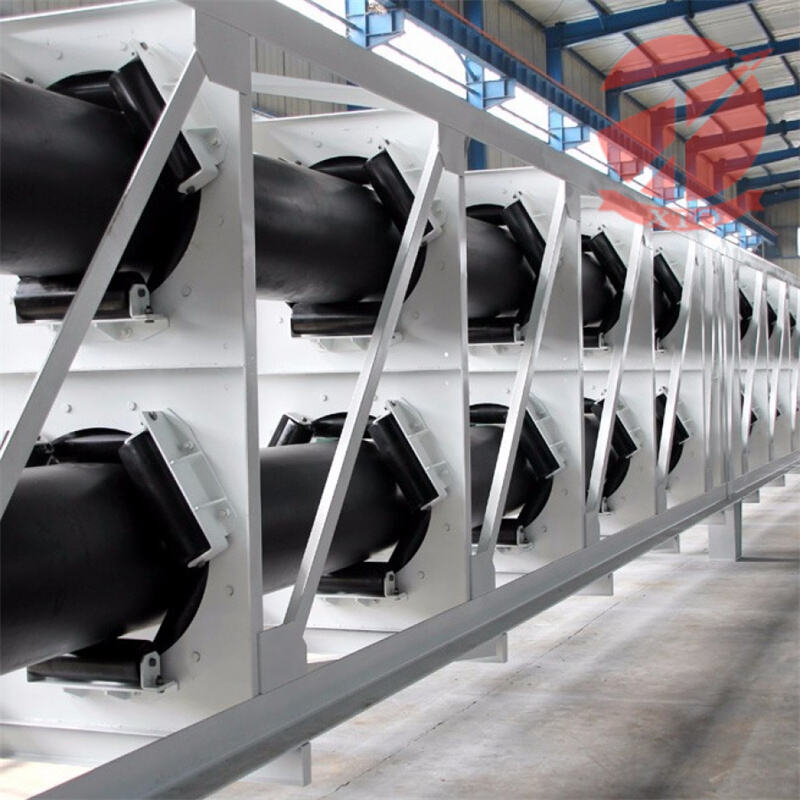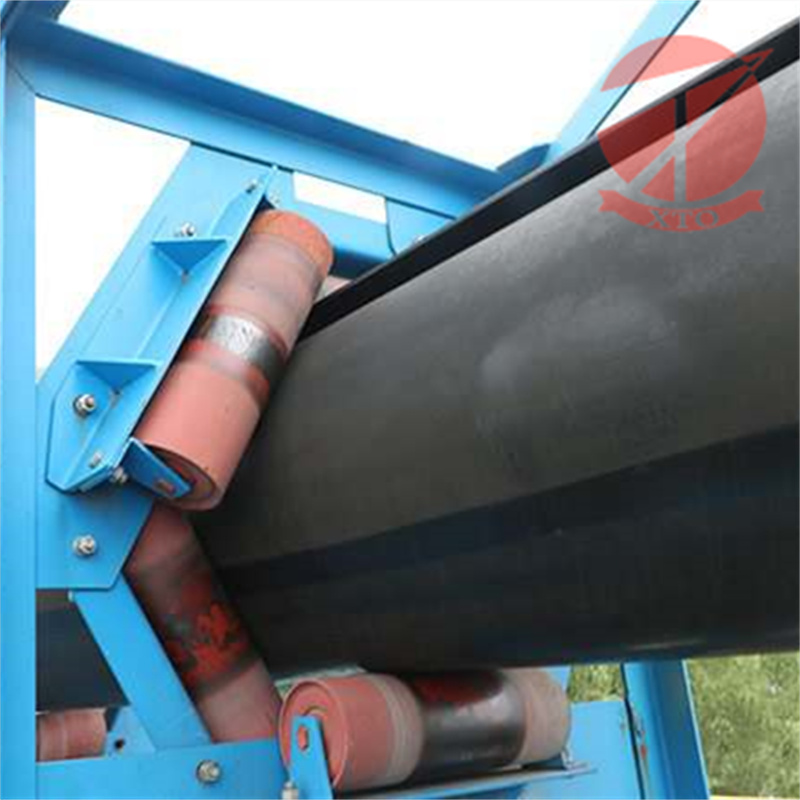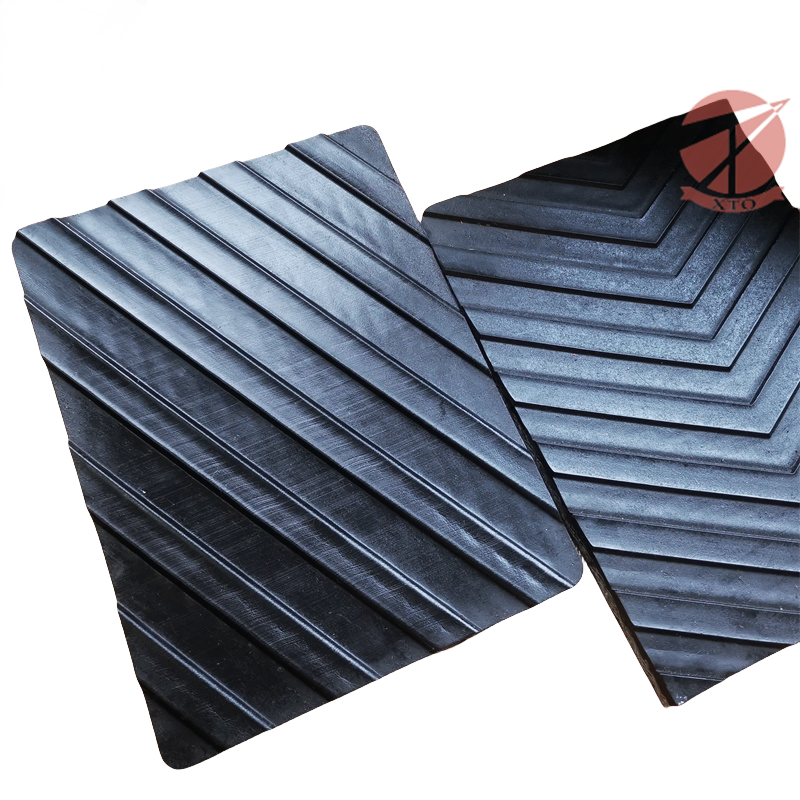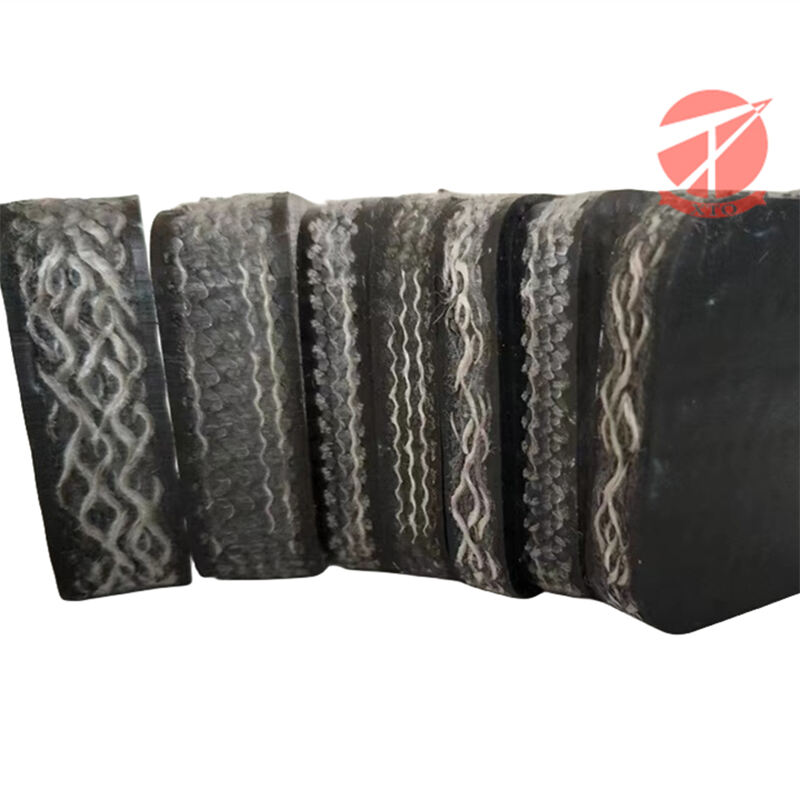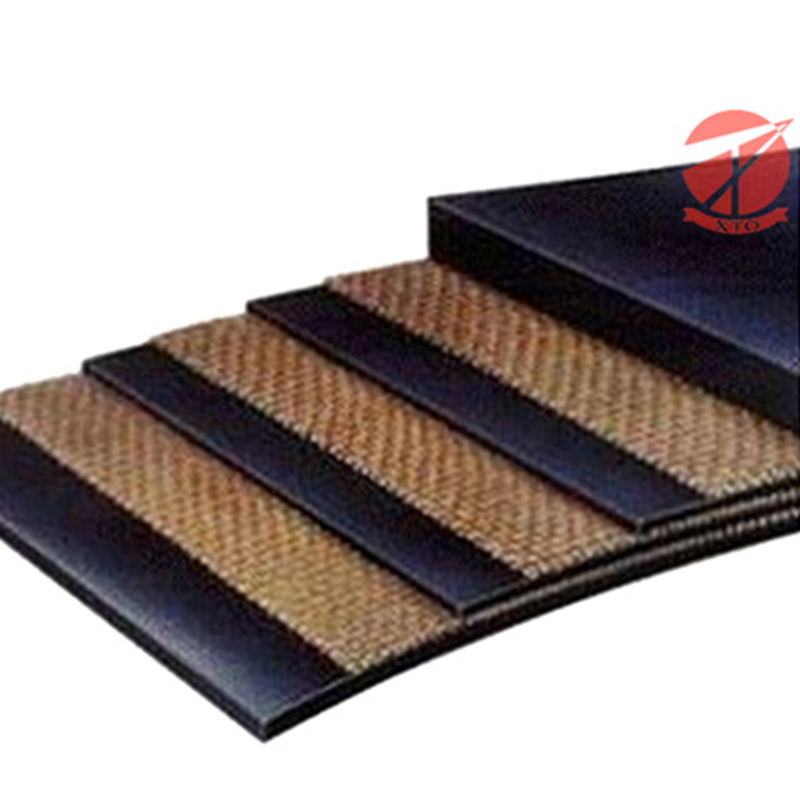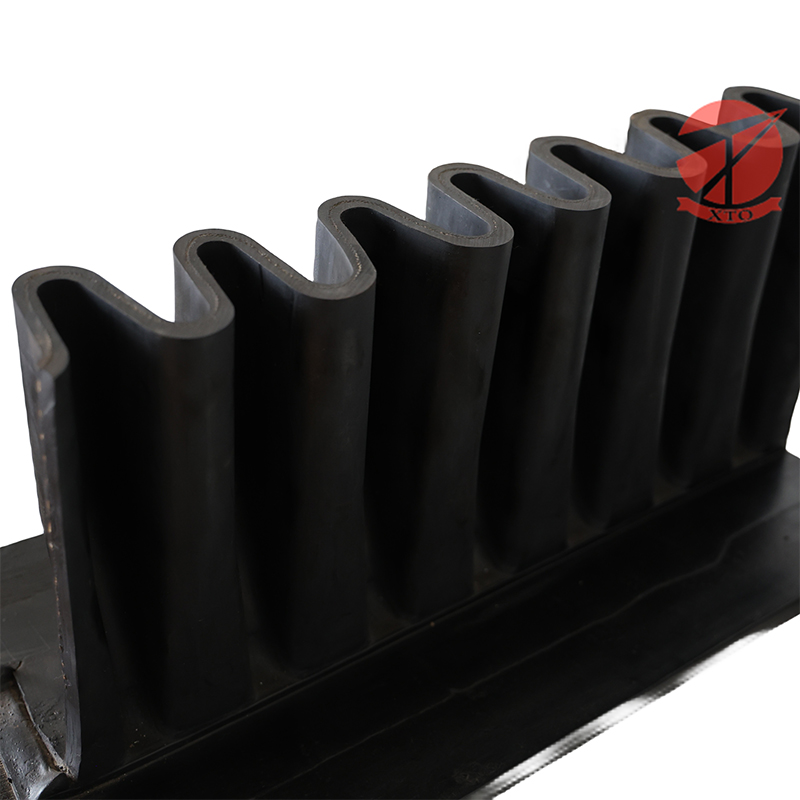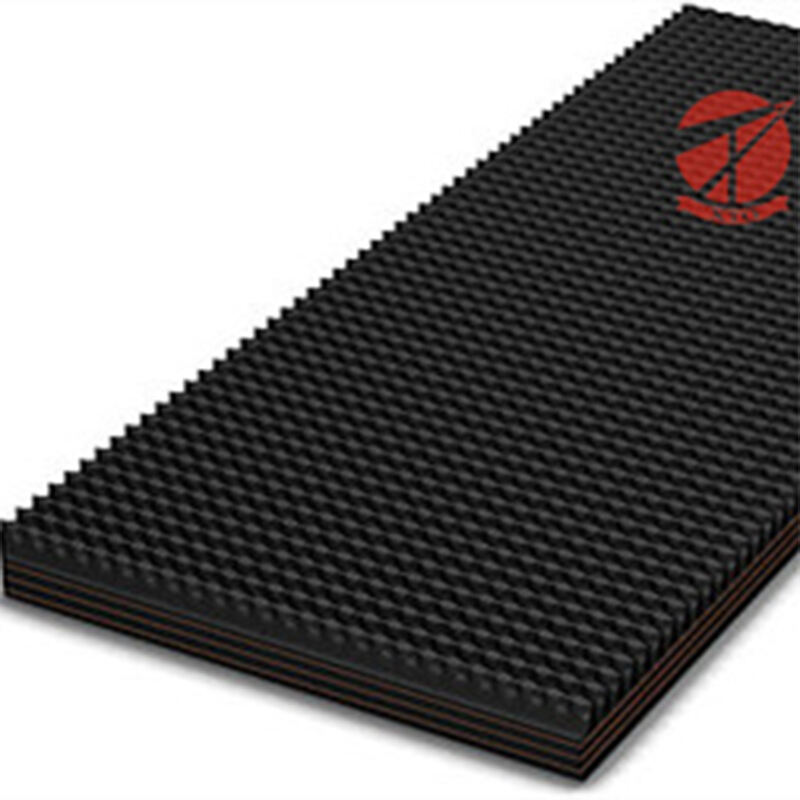- Introduction
Introduction
Usage
Pipe multi-ply textile conveyor belt is a new type of conveying belt which uses EP/NN as carcass, high elastic, high anti-abrasive and high strength rubber as working surface. It’s mainly used in conveying materials which are easily polluted like power, granular materials, etc. when working, the rubber belt changes its form from flat to U shape and finally to pipe, folding the materials and realizing the process of enclosed conveying.
Characteristics
1.Enclosed conveying of materials, protecting both the materials and the environment.
2.Steep angled conveying, the conveying angle can reach 30° usually.
3.Conveying line can be arranged according to the curve of space.
Technical details
1. Fabric core material: Usually used polyester, nylon and other high-strength fiber materials.
2. Conveyor belt thickness: designed according to different application requirements and load capacity.
3. Covering material: such as rubber, PVC, etc., to provide wear-resistant and anti-slip performance.
Standard Specifications
| Strength(KN/m) | No. Of Piles | Carcass Type | Belt Width | Pipe diameters (mm) |
| 300 | 2-4 | NN/EP | 500-2400mm | 100 150 200 250 300 350 400 450 500 550 600 |
| 400 | 2-4 | NN/EP | ||
| 500 | 2-5 | NN/EP | ||
| 630 | 3-6 | NN/EP | ||
| 800 | 3-6 | NN/EP | ||
| 1000 | 3-6 | NN/EP | ||
| 1250 | 3-6 | NN/EP | ||
| 1400 | 3-6 | NN/EP | ||
| 1600 | 4-6 | NN/EP | ||
| 2000 | 4-6 | NN/EP |
Note: It can be customized according to customers' requirements.
Covers grades
In accordance with HG/T 4224-2011 standard
| Grade | Tensile strength min. (ISO37) Mpa | Elongation at break (ISO37) % | Abrasion max. (ISO4649) mm³ | Change of tensile strength and elongation at break after hot air aging % |
| H | 25 | 450 | 120 | -25 ~ +25 |
| D | 18 | 400 | 90 | -25 ~ +25 |
| L | 20 | 400 | 150 | -25 ~ +25 |
| 1.Ozone resistant test condition: (50±5)pphm, 40±2℃, elongation: (20±2)%, time 96hours. 2.Hot air aging test condition:70℃×168h | ||||
The values will help to determine the appropriate cover compound for the application or for the materials carries. Reliable assessment of the behavior of the covers in service for wear and cut resistance cannot be determined from tensile strength, and abrasion values alone.

